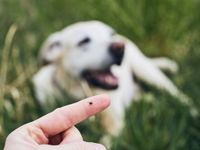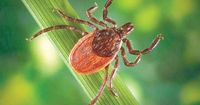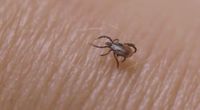As the weather warms up and outdoor activities increase, communities across the United States are coming together to raise awareness about Lyme disease and other tick-borne illnesses. In a significant initiative, three organizations—Lyme Warrior, The Leaf Program, Inc. – Frederick, and Project Lyme—have partnered to host a 5K Fun Run on Saturday, May 31, 2025, at Hood College in Frederick, Maryland. This event not only commemorates the 50th anniversary of Lyme disease’s discovery but also aims to educate families and generate funding for prevention efforts, particularly among children and youth, who are increasingly at risk.
“This race is more than a run—it’s a step toward protecting the next generation,” said Christina Murphy, Vice President of The Leaf Program, Inc. – Frederick. “Together with Lyme Warrior and Project Lyme, we’re empowering communities with knowledge that could save lives.” The 5K Fun Run will take place from 9:00 AM to 11:00 AM and will feature prizes for the “Most Green” and “Best Frederick Flair,” alongside a mini auction for top fundraisers. Participants of all ages and fitness levels are encouraged to join, with a special emphasis on wearing green, the official color of Lyme disease awareness.
This event serves as a soft launch for an annual Lyme Disease Awareness tradition in Frederick City, aiming to establish the area as a national leader in Lyme disease prevention education. Proceeds from the event will support grassroots educational efforts, including school-based prevention programs, caregiver resources, and training for summer camp counselors.
Meanwhile, concerns about Lyme disease are not confined to humans. Dog owners in Grass Lake and surrounding areas have reported a growing number of Lyme disease cases among pets. A recent Facebook post highlighted a local dog that tested positive for the illness, prompting a flood of comments from other pet owners sharing similar experiences. Many reported that their dogs tested positive despite being on flea and tick prevention medications.
“Moved here almost a year ago. But ticks are horrible here,” one resident lamented. Another added, “We are in a heavily wooded area… they have been medicated and still tested positive.” Lyme disease in dogs is caused by the Borrelia burgdorferi bacterium, which is primarily transmitted through the bite of an infected black-legged tick, commonly known as the deer tick.
Common symptoms of Lyme disease in dogs include fever, loss of appetite, decreased energy, lameness, joint swelling, and general discomfort. In severe cases, it can lead to kidney problems or neurological issues. However, some pet owners noted their dogs showed no signs of illness at all. “One of my dogs has been positive for two years. He’s fine though,” shared a concerned owner. Others shared more serious outcomes, with one person stating, “We lost our 5-year-old golden doodle two weeks ago… tested positive for two tick-borne diseases that ignited an autoimmune response.”
Veterinarians emphasize the importance of early detection and treatment. “We treated her and she has been clear since,” one owner recounted. Doxycycline, an antibiotic commonly prescribed for Lyme disease, has proven effective. “She was pretty sick for a month or so but the meds cleared it right up,” another commenter noted. “She’s perfectly fine now.”
To combat the rising threat of Lyme disease, veterinarians recommend year-round flea and tick prevention, as ticks can remain active even in cooler temperatures. The Centers for Disease Control and Prevention (CDC) advises dog owners to keep grass short, avoid wooded or brushy areas during peak tick seasons, and promptly remove ticks using fine-tipped tweezers.
In Maine, the situation is similarly concerning. The University of Maine Tick Lab recently released its annual report, revealing that tick-borne illnesses remain a significant health risk, with the majority of tick encounters occurring in people’s backyards. Griffin Dill, who manages the lab, stated that ticks can survive under snow cover and are active any time temperatures are above freezing.
Last year, more than 3,500 deer ticks were tested, with nearly 42 percent testing positive for the bacteria that cause Lyme disease. The state recorded a staggering 3,218 confirmed cases of Lyme disease in 2024, surpassing the previous record set in 2023. As of now, 450 cases have already been reported in 2025. Dill noted, “Unfortunately, here in Maine, we are still seeing an increase of tick-borne case numbers. We haven't yet seen evidence of a plateau.”
In addition to Lyme disease, researchers at the lab also test for other diseases carried by deer ticks, including anaplasmosis, babesiosis, hard tick relapsing fever, and the Powassan virus, which can be deadly. Annemarie Weymouth, who lost her husband to Powassan two years ago, is on a mission to raise awareness about the virus and the importance of taking precautions against ticks. “Do your tick checks, use your protection sprays, have your yard sprayed, be super, super vigilant,” she advised.
In Tennessee, the arrival of warmer weather signals the beginning of tick season, increasing the risk of tick-borne diseases such as Rocky Mountain Spotted Fever. Dr. Marshall Hall, Director of TriStar Skyline’s Emergency Medical Center, highlighted the severity of Rocky Mountain Spotted Fever, which can lead to serious complications if left untreated. Symptoms include fever and a characteristic rash that starts as red and develops into a petechial rash.
Lyme disease, while more common in the northeastern United States, is also a concern for outdoor enthusiasts. Dr. Hall emphasized the importance of prevention, recommending long-sleeved shirts and pants, DEET-based repellent, and thorough tick checks after outdoor activities.
As communities rally together to combat the rising threat of Lyme disease and other tick-borne illnesses, awareness and education remain crucial. Events like the upcoming 5K Fun Run in Frederick and the proactive measures taken by pet owners and health professionals are vital steps in protecting both humans and pets from these potentially dangerous diseases.





